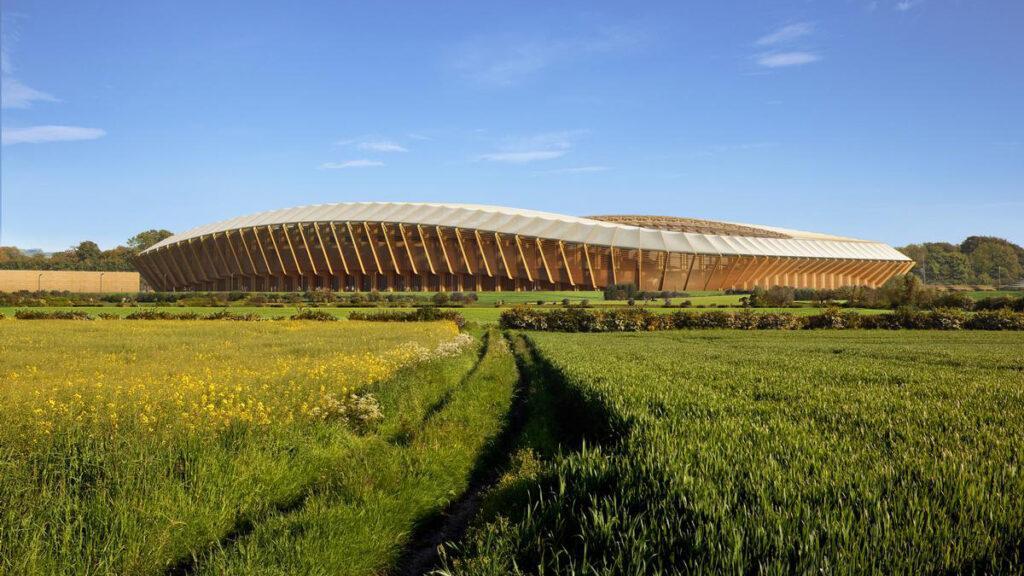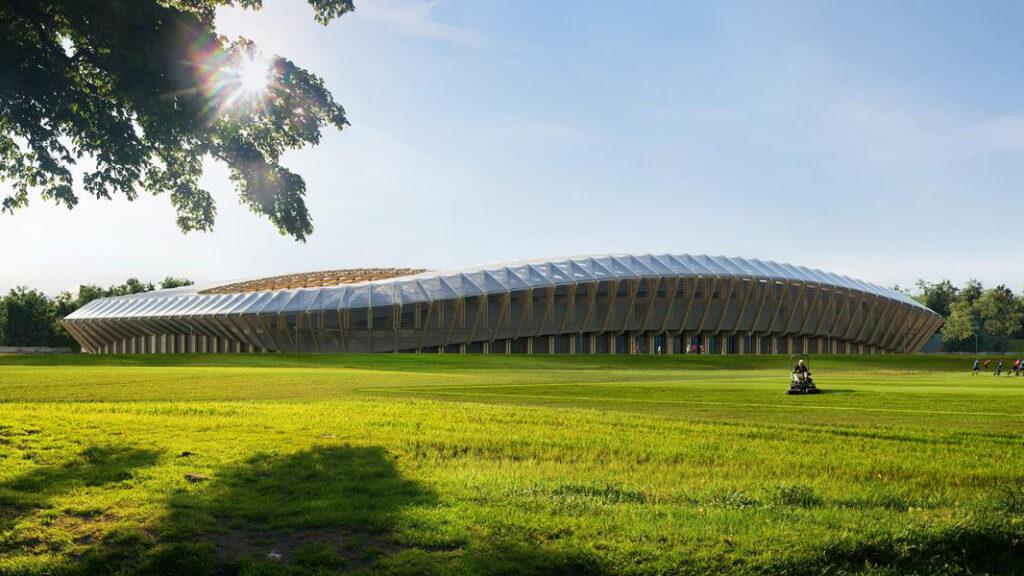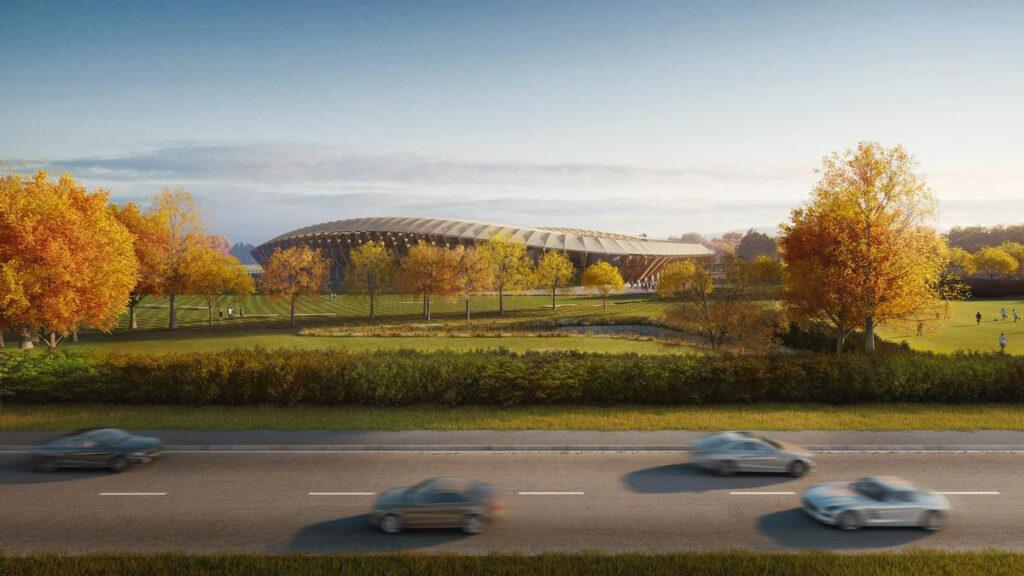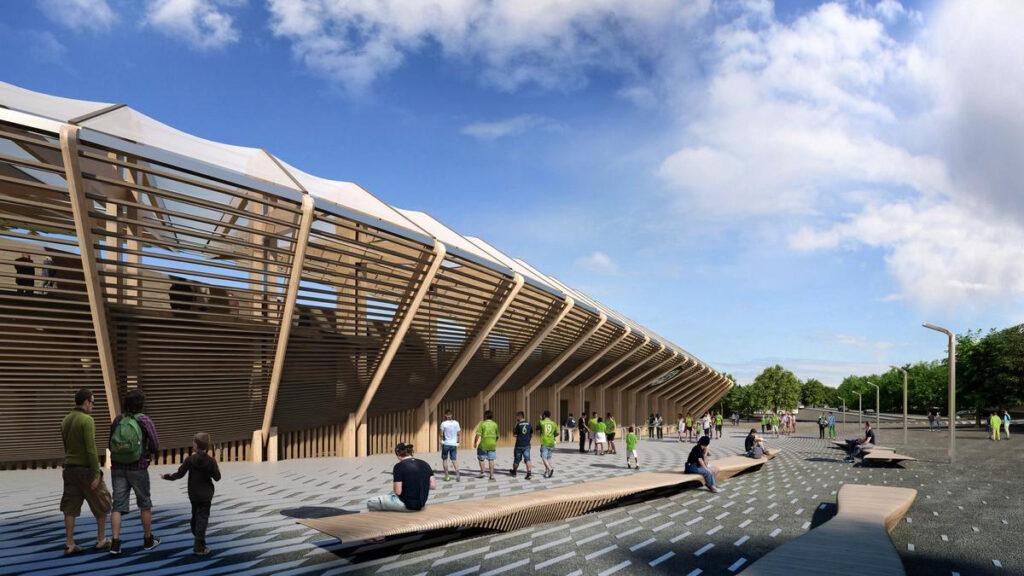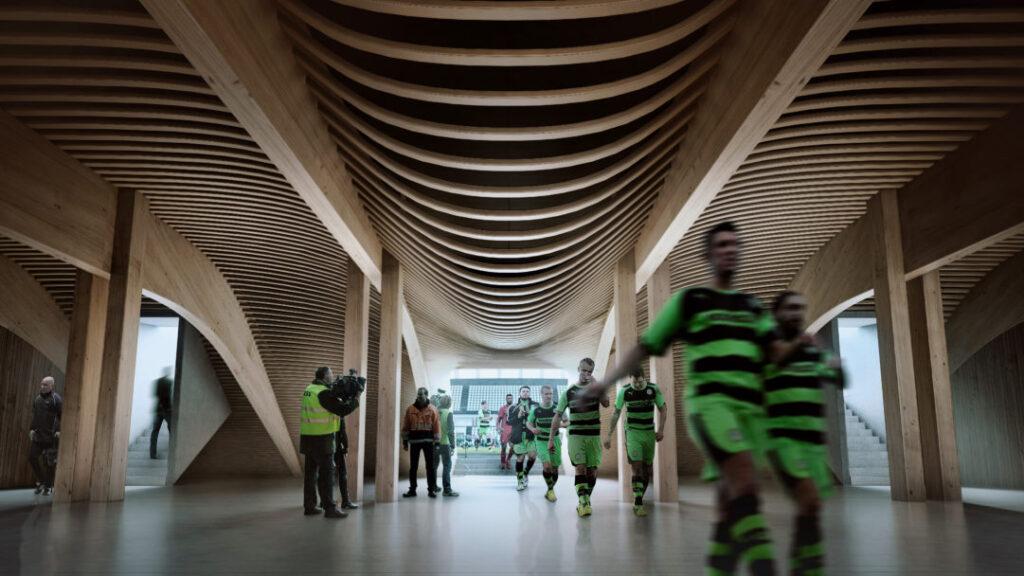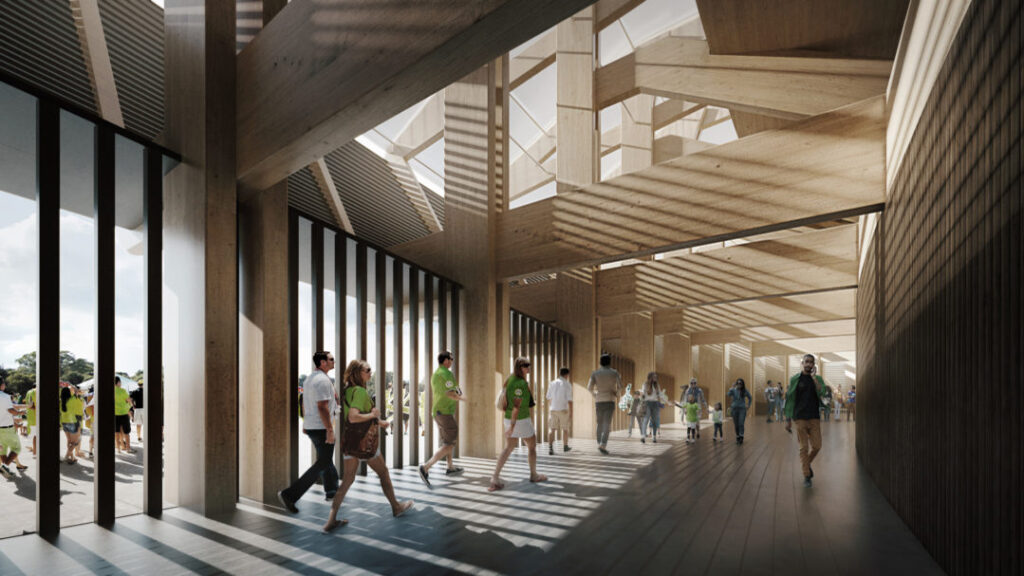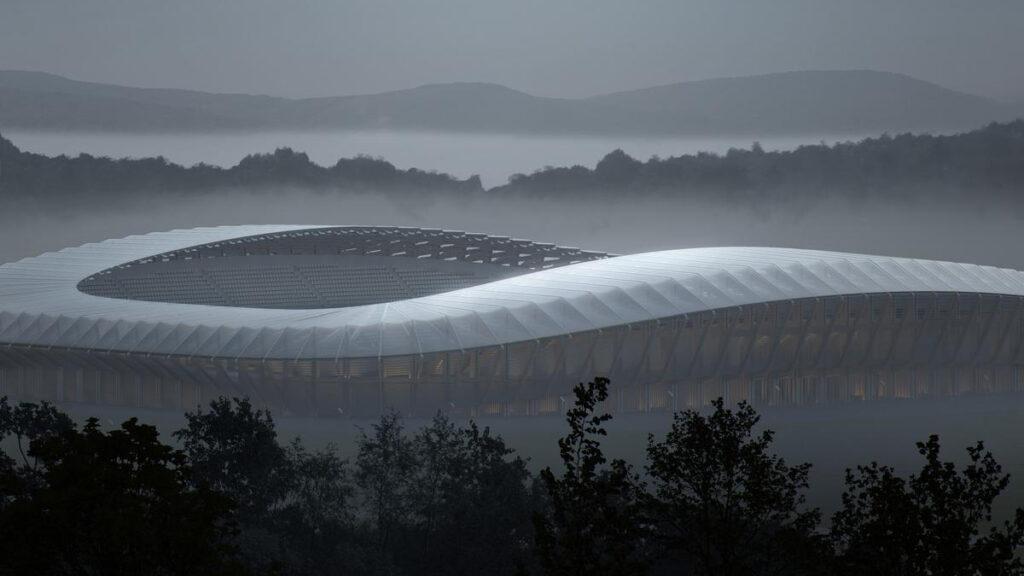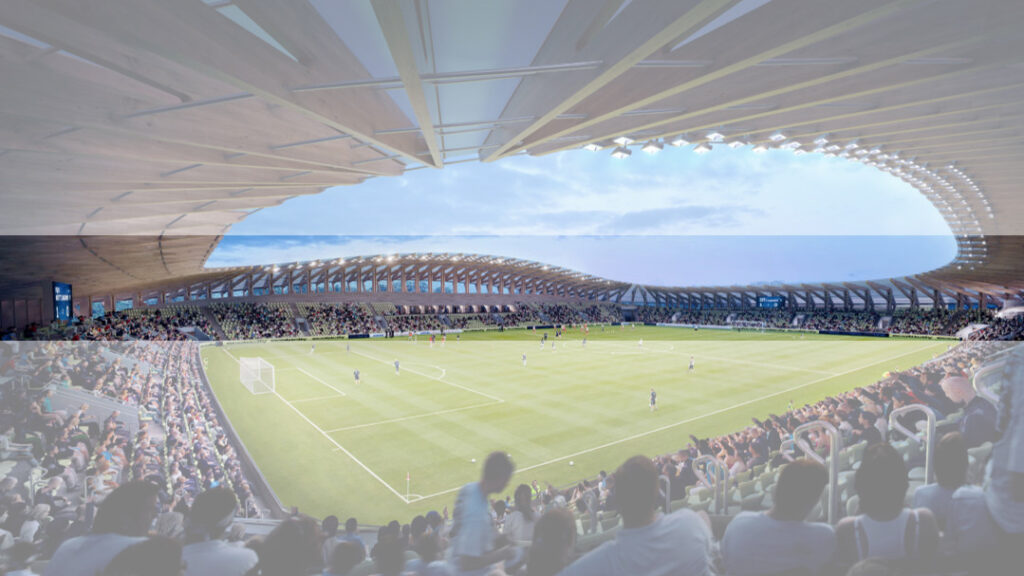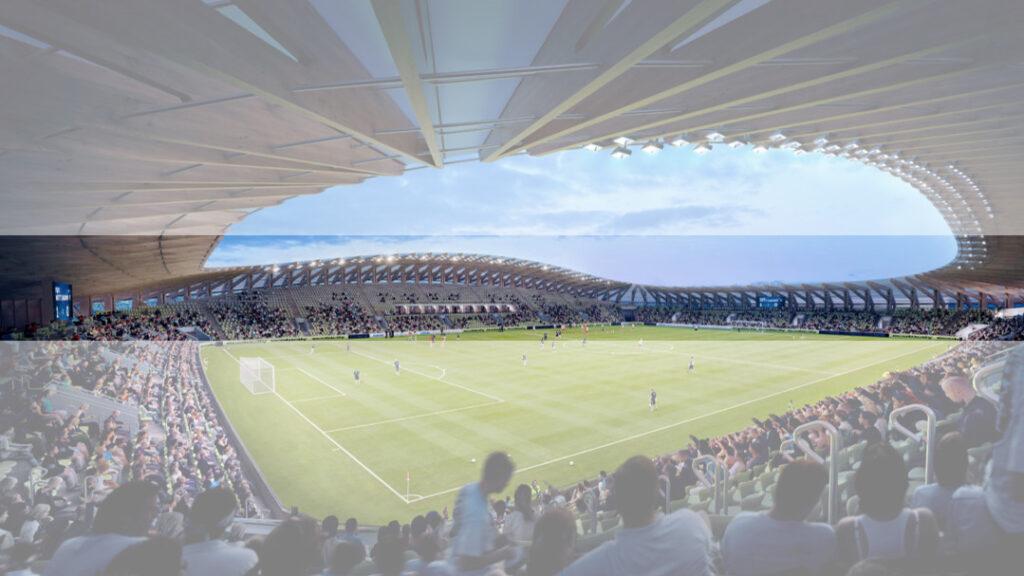A timber first
Following an initial defeat by the authorities, in the second leg Zaha Hadid Architects managed to gain planning permission for the world’s first timber football stadium.
The football club Forest Green Rovers is not exactly famous for gala performances in the Champions League. There is one area in which the team is truly world-class, however: it’s official – the club from the town of Nailsworth in the west of England is the most eco-conscious football club in the world!
The world’s greenest football club
For some years now, the grass in its football stadium has been tended without the use of pesticides. Even the lawnmower is solar-powered. And current chairman Dale Vince has also brought the footballers’ workwear into line with the club’s eco-friendly mission: the kit and shinpads are made of bamboo fibres instead of plastic. All this has resulted in the Forest Green Rovers receiving the Momentum for Change Award as the world’s greenest football club.
But that’s not all – Dale and his team are still exploring ways to cut their carbon footprint. Even though fans are served vegan beer and vegan food when they come to cheer on their team, the stadium itself is built out of plastic, steel and concrete.
Wanted: timber football stadium
To put it in a nutshell: the grounds themselves are the final hurdle for the players and their board of directors. This is set to change as well, though – the construction of a new, climate-friendly football stadium has been given the green light at last. And so the day will come when the club’s fans can support their heroes from timber stands.
But let’s start at the beginning. Admittedly, the plan to build the world’s first timber football stadium isn’t entirely new. FGR chairman Dale remarked some years ago: “When you bear in mind that around three quarters of the lifetime carbon impact of any stadium comes from its building materials, you can see why that’s so important.” He invited as many as 50 architecture bureaus to present sustainable designs.
On account of the many competitors involved, it was truly a tough contest back in 2016. Ultimately, the application submitted by Zaha Hadid Architects was chosen as the winner for this prestigious construction. But the celebrations were short-lived.
Authorities put up obstacles
It soon became clear that the design presented for the world’s first timber stadium wouldn’t be approved by the authorities. Some local politicians decided to put a spanner in the works. Their original reasons for rejecting the scheme seem quite odd, though:
The councillors expressed concern that the timber stadium, at its height of 65 ft (20 m), could disturb the view of a nearby historic pond. They also feared that the expensive parking charges of seven pounds would encourage people to park on the adjoining fields instead, to save money…
Politicians suddenly full of pride
After much deliberation and several changes to the concept, planning permission was then granted. And as is quite usual in the world of politics, this fantastic decision suddenly prompted an outburst of celebrations. In the words of district councillor Miranda Clifton: “This building is iconic, it could be a tourist attraction. At the moment we are known for our waste incinerator.”
But let’s forget the politicians for now. What exactly is the building going to look like? Well, almost all the parts that are made of steel or concrete in other stadiums will be timber in the new FGR construction. The club has announced that it will be the first all-timber football stadium, with almost every element made of sustainably sourced wood. From its structure through to the seating terraces and floor slab.
Membrane contributes to turf growth
The roof of the stadium will also be covered with its own transparent membrane. This will enable the stadium to blend into the surrounding countryside, with a minimum impact. At the same time, the membrane will allow better growth of the grass in the stadium. And it will prevent confusing shadows from being cast over the pitch.
According to the designers, the position of each seat has been calculated to provide unrestricted views – with the aim of bringing the club’s fans as close as possible to their idols. The fans will be as close as five metres from the pitch!
An expanding football stadium
The anticipated growth of this eco-friendly club has also been taken into consideration: originally conceived for 5,000 spectators, the timber stadium will expand without too much trouble to accommodate a future rise in the number of fans. Additional stands can be added on as required, without the need for major construction works.
Football stadium for enthusiasts
The club’s visionary and eco-conscious chairman is delighted: “We’re thrilled with the concept and the amount of thought Zaha Hadid put into their design – their experience of stadia design and their ability to put environmental issues at the heart of what they do really stood out. They have given us an iconic and original new stadium.”
The acclaimed architects have expressed their thanks in a courteous press statement: Jim Heverin, director at Zaha Hadid Architects, remarked: “We are very proud to be selected to design the new home for Forest Green Rovers. The club’s heritage, ambition and vision reflect our own, combining the latest material research and construction techniques with new design approaches to build a more ecologically sustainable and inclusive architecture.”
Touch wood
One thing can be said even now, though: the new football stadium for Forest Green Rovers is set to offer the club’s fans a remarkable experience in the stands. It only remains to be hoped that the team’s current success on the pitch is as sustainable as their new grounds.
Text: Johannes Stühlinger
Translation: Rosemary Bridger-Lippe
Images: Zaha Hadid Architects | Studio MIR
